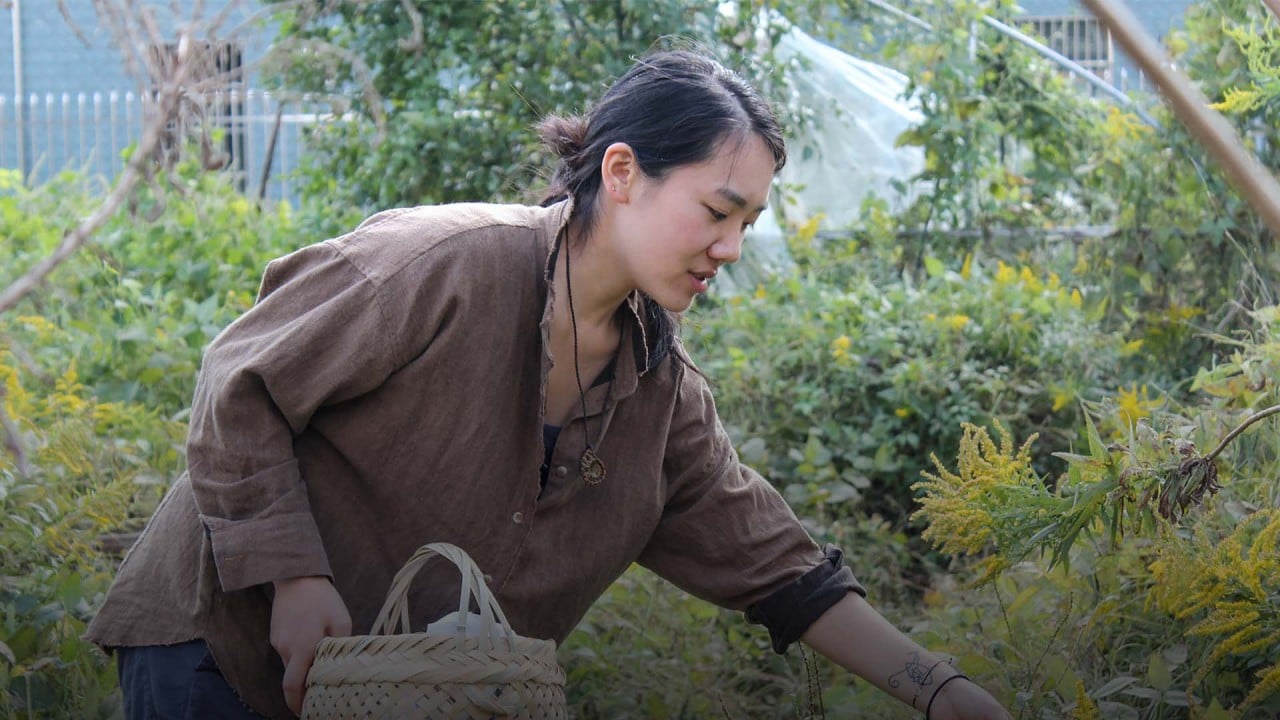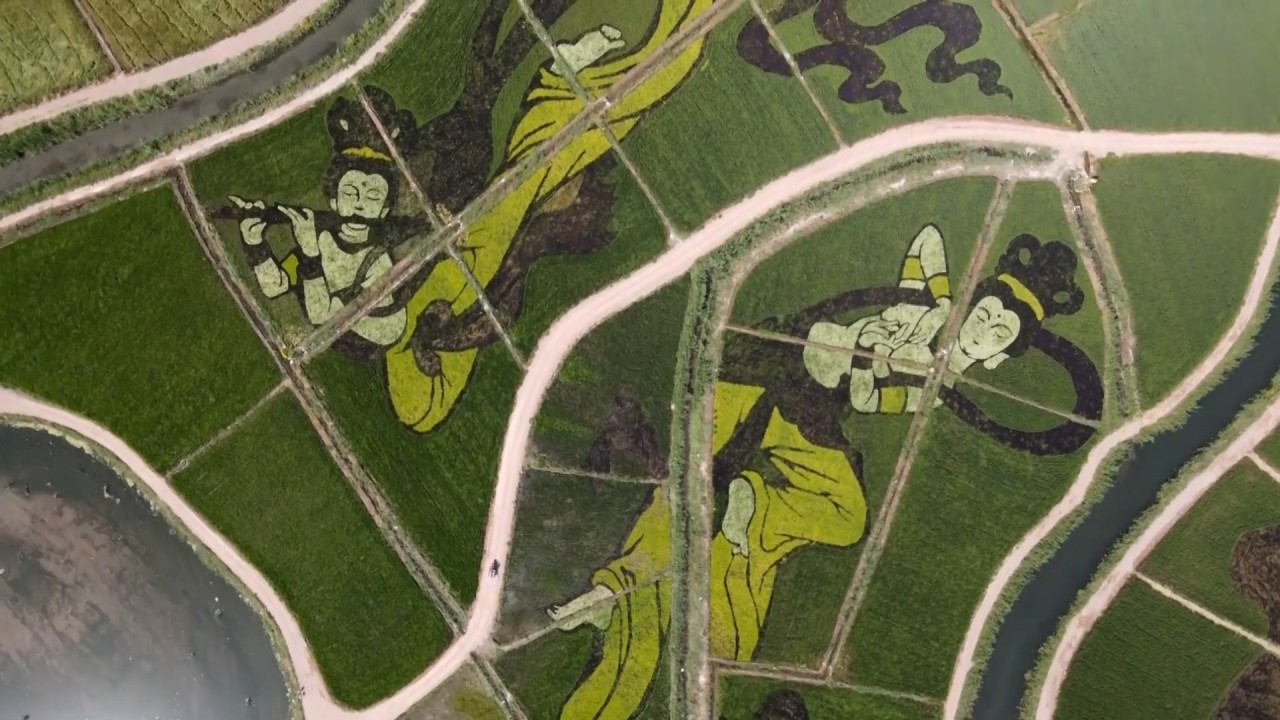
China’s fight against extreme poverty may be over, but a stark urban-rural divide lingers
- Since Beijing declared the end of extreme poverty in 2021, the government has placed greater emphasis on revitalising rural areas
- But success has been uneven, with many undeveloped regions struggling to find a niche and still dependent on small-scale farming
Two hours’ drive from the nearest city, in a secluded village tucked at the end of a winding mountain road, a woman clad in traditional Bai clothing stares into a camera and touts the benefits of locally-grown fragrant rice.
“The rice is nutritious and has a delicate sweetness,” she tells viewers on the live-stream e-commerce platform, Douyin, the Chinese version of TikTok.
Propped up in corners of the air-conditioned room are various handicrafts for sale: blue handbags, handkerchiefs and embroidered tablecloths, tie-dyed in the traditional style that Bai people have used for 1,500 years.
Outside, fields of rice, yellow peaches and dekopon oranges stretch out to the foothills, with farms raising chickens and pigs dotted among them.
China’s Covid slowdown raises spectre of middle-income trap
Just a decade ago, this picturesque village in the Wuling Mountains of central Hunan province was a backwater where residents earned less than 1,000 (US$147) yuan a year.
In 2011, four in five young people born in Hequn moved away to seek work and more than 40 per cent of the population, which numbers just over 1,200 people, lived in poverty.
Now, the collective economy rakes in more than one million yuan in profit per year through its orchards, rice paddies and other shared agricultural projects.
Hequn, where more than 97 per cent of the population is from China’s Bai ethnic minority, has undergone a tremendous economic transformation in the past decade. Poverty officially ended there in 2018 and residents now make on average nearly 20,000 yuan per year.
The village’s turnaround is an early success story for Beijing’s rural revitalisation campaign.
But solidifying the type of success seen in Hequn across all of China is no easy task.
Targeted poverty reduction campaigns and developing industries suited for each region are key tenets of rural revitalisation. While Hequn has the recipe for success, other areas are struggling to find their niche and many still depend on barely profitable small-scale farming.
One of the most important ways to revitalise rural areas, especially if tourism is going to play a part, is storytelling, said Huang Yinwu, a professor with Shanghai Jiao Tong University.
In 2013, after Xi visited Shibadong village, or the village of 18 caves, in Hunan’s west, the once destitute area sold itself as the starting point for China’s poverty reduction campaign and soon became a tourist attraction.
Villagers that met the president were hired by the local tourism operator to tell their stories to visitors, restaurants and hotels opened, and exhibition halls were built to record the village’s history and transformation after Xi’s visit.
Residents also invested to collectively grow kiwis, which are sold across the mainland, Hong Kong and Macau, and a mineral water plant was built to create jobs nearby.
One local resident Long Xianlan, who was previously unemployed, was sent to learn beekeeping, as well as how to grow rice and cure meat. He was offered loans to get a local cooperative off the ground, which now has annual profit of nearly 2 million yuan, said Shi Jintong, a village official.
For rural areas, being able to tap tourism and local crafts is more of a coincidence than a development solution, said Dang Guoying, a senior researcher at the Institute of Rural Development of the Chinese Academy of Social Sciences (CASS). He added the village of 18 caves is unique, as most national tourism sites are cities or famous natural attractions.

“It’s impossible for every village to develop rustic tourism, villages with [favourable conditions] can, but it won’t be because of a political leader’s visit, it has to have special local resources,” he said.
“There are more than 500,000 villages across China, the leaders can’t visit all of them.”
Liao Hongbing, an official at the Hunan Administration for Rural Revitalization, said there was no one-size-fits-all approach to develop local farms in the province because of its complex and rugged terrain.
Villages like Hequn and Shibadong have been successful because they found the right crops to grow on a large scale.
According to Dang, rural revitalisation and advanced agriculture essentially rely on scaling up, therefore small farms tended by individuals are usually insufficient.
Young people will not trade higher paying city jobs for an unprofitable small holding either, Dang said, meaning rural revitalisation will not work without large-scale development.
“The development of rural areas cannot solely depend on agriculture. Rural residents in developed countries usually have side businesses,” he said.
“During farmers’ slack seasons, their opportunity costs are larger than zero. For their income to grow, they must be ‘fully employed’, which requires nearby opportunities provided for farmers to take on part-time jobs.”
The northern reaches of Yunnan province in China’s southwest are home to some of the poorest villages in the country. Many residents rely on selling crops from small farms.
Qian, a local social worker in Huize county who only gave his last name, said residents struggled to develop industries other than small-scale farming.
China tells banks to support rural infrastructure, but don’t add to hidden debt
Unlike Hequn, Huize does not have fertile soils, a historic event to capitalise on, or a history of producing vibrant ethnic handicrafts. The rugged mountainous terrain is unsuitable for industrialised agriculture, too. Government subsidies are still an important part of local livelihoods.
One of the few ways farming is being improved in Huize is through the introduction of new and higher yielding vegetables, Qian said.
Technological breakthroughs have helped advance agriculture in Hunan. The province was home to Yuan Longping, known in China for developing the first varieties of hybrid rice and boosting grain harvests to help feed the world’s most populous country.
Just an hour outside Hunan’s capital Changsha, Chunhua county offers an experimental model of modern agriculture, using better seeds and more efficient fertilisers and pesticides.

Long Weiyi, who is a contract farmer looking after 20,000 square metres (215,278 feet) of rice paddies, said the highly industrialised operation could grow more than 106 kilograms of rice per acre. The average yield nationally is 79 kilograms per acre, according to the National Bureau Statistics.
Not far away, the Hunan Xiangyan Seed Industry, or Peppera Seed, cultivates new varieties of high-yielding vegetables.
“Seeds are the computer chips of crops, and their quality decides whether the crops can have good yields,” said He Jiuchun, chairman and general manager of the company.
“When the seeds have high yields, profits increase, farmers earn more, and they will be more motivated to work.”
Thousands of people have become rich growing and selling peppers in Chunhua, said Zeng Canqiang, a county official.
Last February, Xi said that 98.99 million people had been freed from abject poverty after an eight-year campaign and residents of more than 800 counties, with average income under 4,000 yuan a year, had been removed from the official poverty list.
But China still has work to do in the countryside. Looking ahead, rural revitalization will need specific solutions tailored for different regions, according to Huang.
Some villages have clear cultural, historical or natural resources, but others will need to find their own means of sustainable development, he said.




